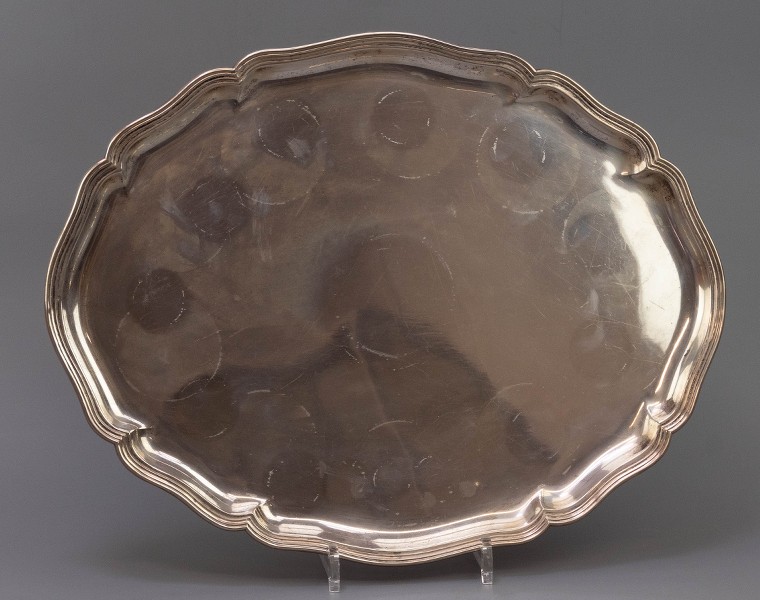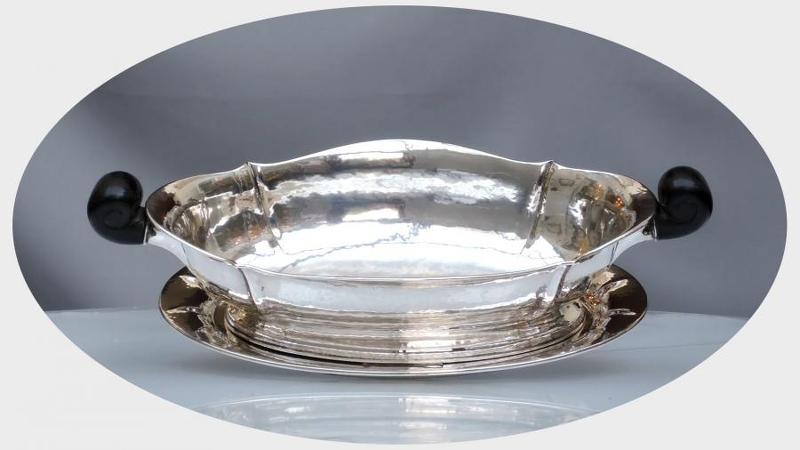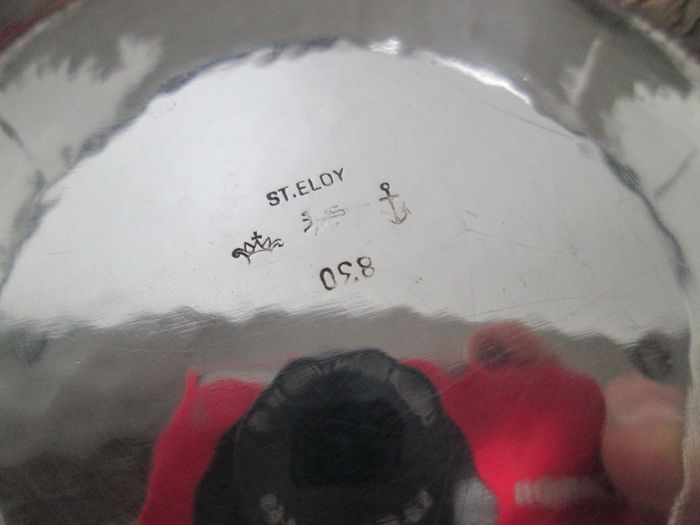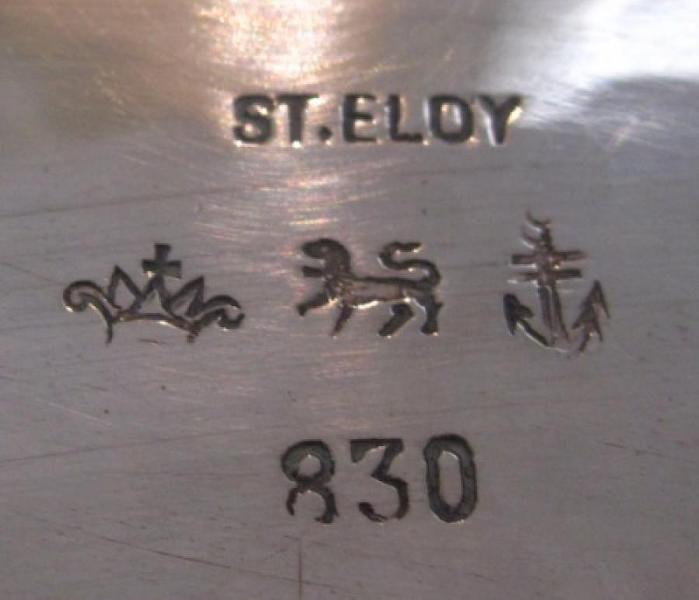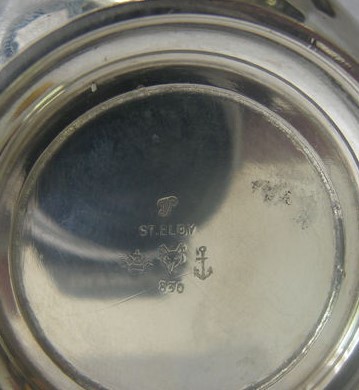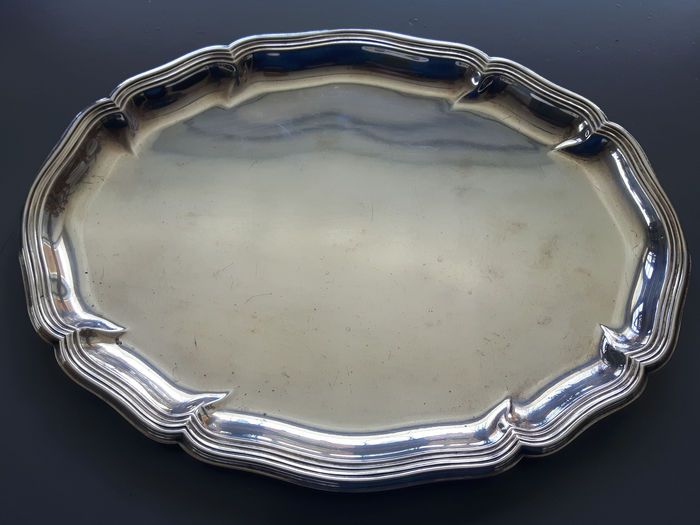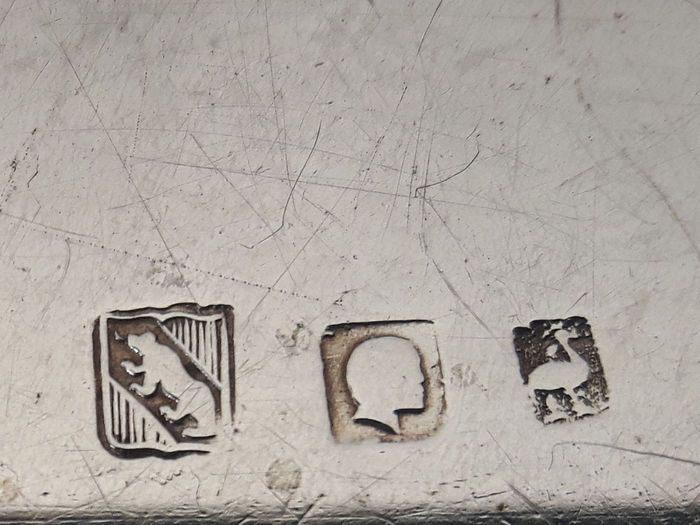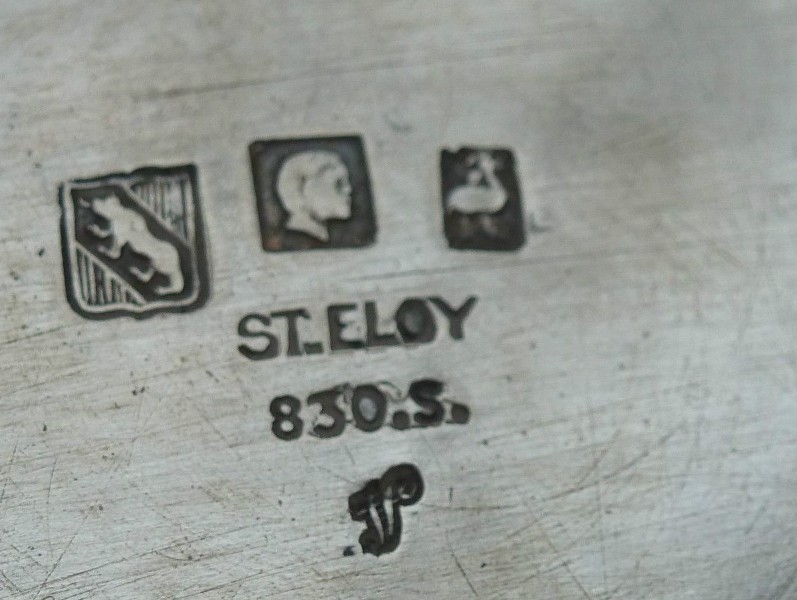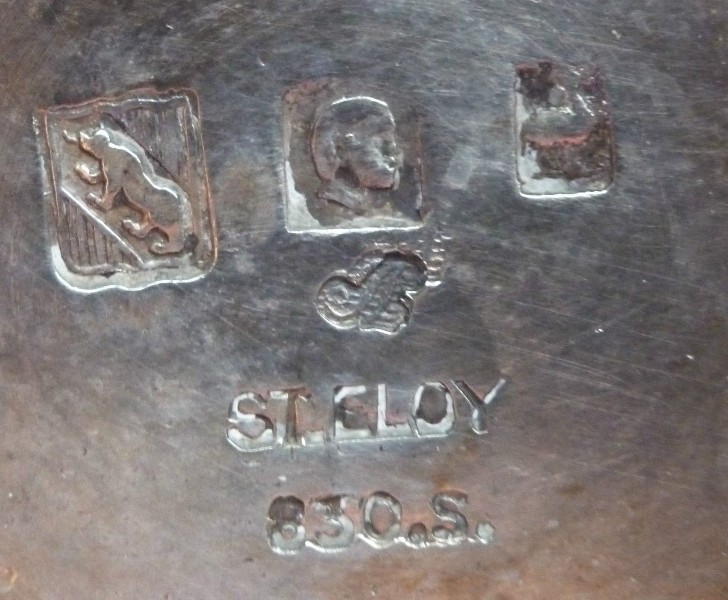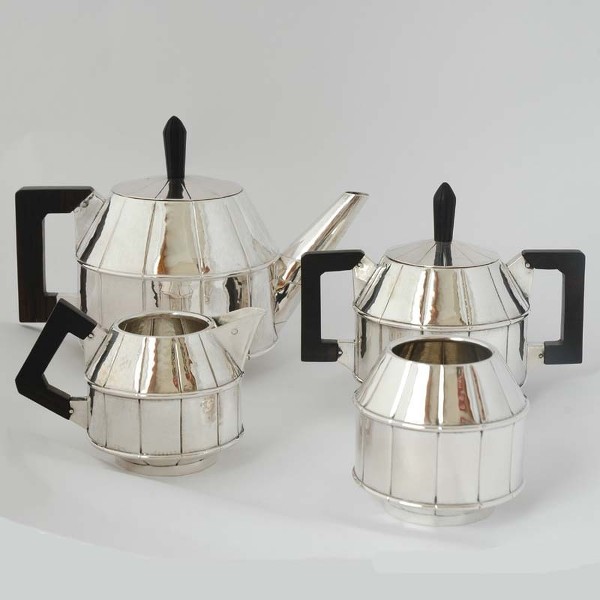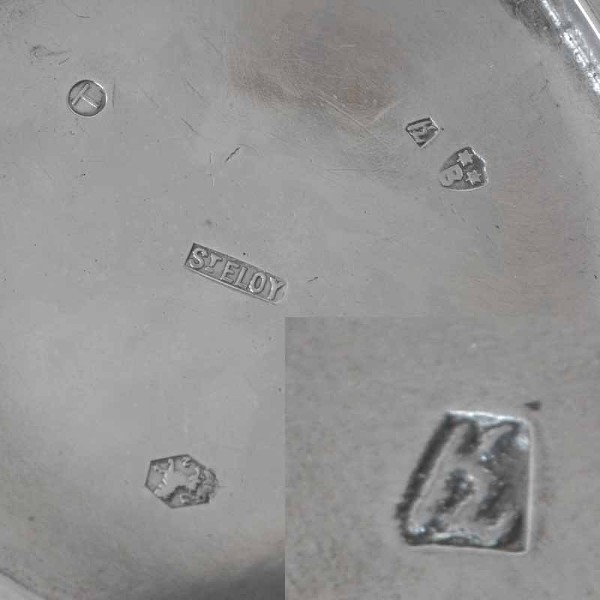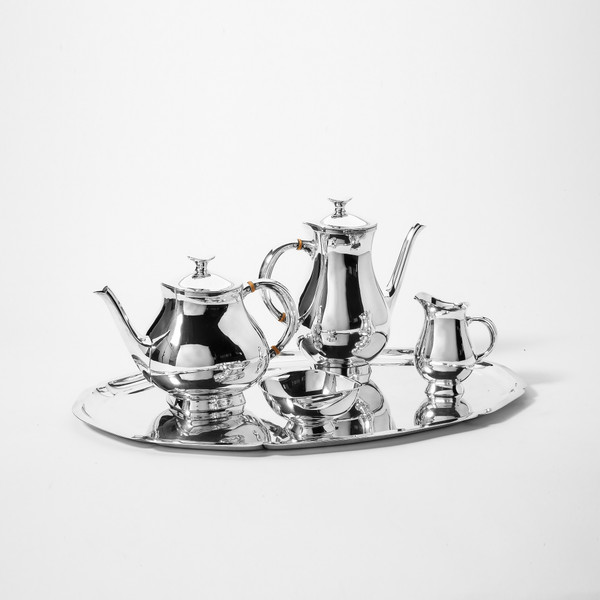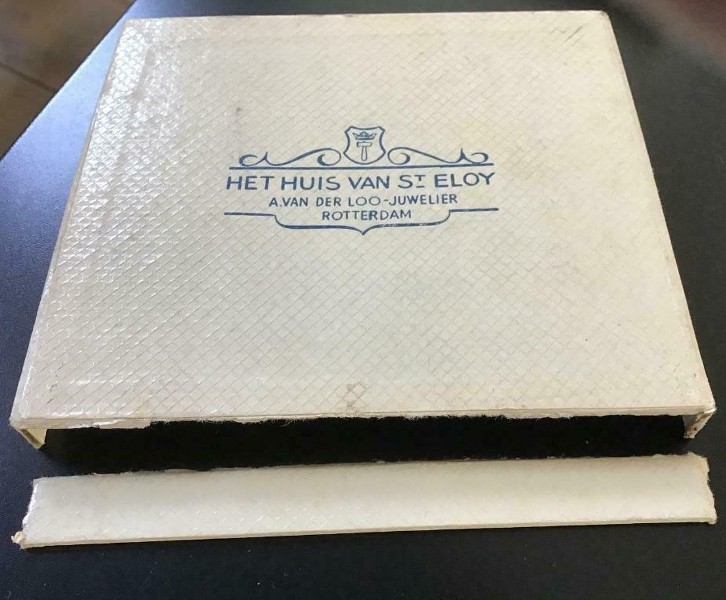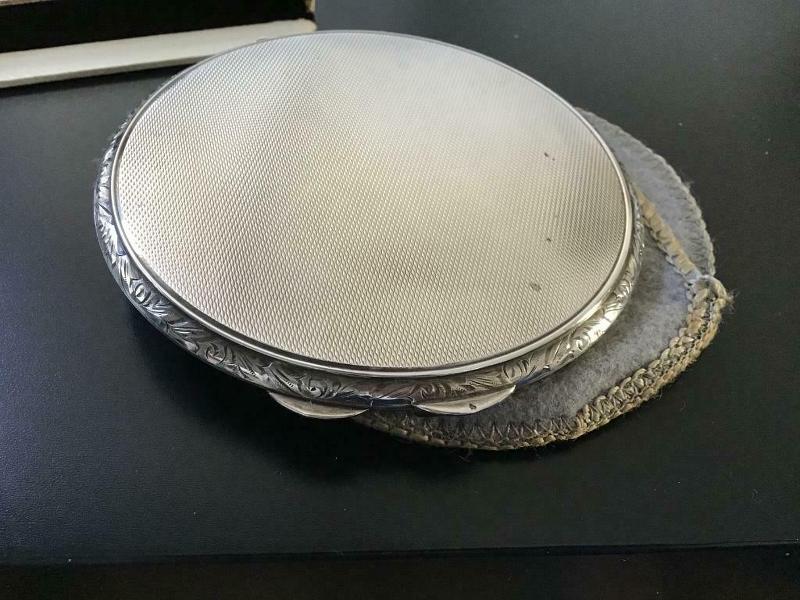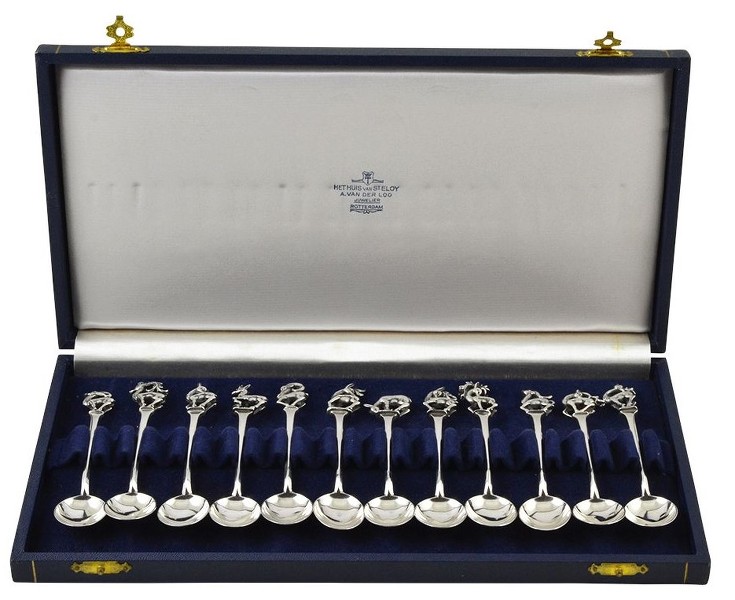Koch & Bergfeld, Bremen, mark from c. 1870, retailer Sint Eloy



Pair of silver cloches, made probably by Pochon Frères, retailer St Eloy
In the meantime, I had contact with Albert van der Loo, the grandson of the founder of Het Huis van St. Eloy, Albertus Eduard Maria van der Loo (1878-1960). According to Albert van der Loo, as he remembers, the
St. Eloy mark was sometimes used before the Second World War. The jewelry store was aimed at the top level from the start, before WW-2 it was located on the Blaak in Rotterdam, then on the Lijnbaan, in recent years in Hillegersberg, until 2002.
He was surprised that the St. Eloy mark appeared in combination with pseudo-marks and with the maker's mark of Begeer. Certainly, it is possible that his grandfather used it as a (un-registered) retail mark and as such took responsibility for the quality and content of the silverware. Before it could be sold publicly in a shop or auction, it usually had to be taken to assay office. Where it was not fully tested but after inspection and payment of tax, it was stamped with the letter V for Foreign. The pre-war years and crisis years were not easy years, many lost their wealth and often the silverware was sold first. Even then, refugees from Belgium and other countries that were involved in the First World War and period prior to World War II came to the Netherlands.
Silver is pawned and sold to pawn shops and silver houses. They sometimes pay less than the silver price because they take risks. It is very attractive to buy high-quality silverware, without labor costs, for less than the silver price. Still not being able to resell, melting it down also yields enough.
As far as I know, the St. Eloy mark has never been forged and the stamp seems to be expertly "cut".
The House of St. Eloy registered the importer's mark
StE+ in 1953
Peter.
